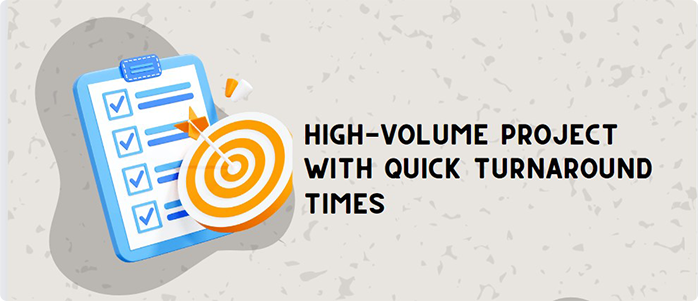

Balancing Speed and Accuracy in Government Policy Translations: Hansem Global’s MTPE Success Story
Discover how Hansem Global expertly balanced speed and accuracy in a high-volume government policy translation project. Learn about their innovative MTPE approach, leveraging technology and human expertise to deliver top-quality translations within tight deadlines.
Project Summary
In today’s fast-paced world, the demand for rapid yet accurate translations is growing exponentially. This demand is particularly critical in the field of government policy, where timely and precise communication can make all the difference.
Hansem Global Vietnam, a leading translation and localization company, was presented with a significant challenge: managing an extensive Machine Translation Post-Editing (MTPE) project involving 220,000 words in the complex realm of government policy.

Hansem Global Vietnam, a leading translation and localization company
The project required a delicate balance between speed and accuracy, the handling of intricate terminology, and the delivery of high-quality translations within tight deadlines. This case study explores how we successfully navigated these challenges and delivered outstanding results.
Challenges
- High Volume of Content with Quick Turnaround Requirements
Government policy-related documents are often extensive and detailed, requiring meticulous attention to ensure nothing is lost in translation. Meeting tight deadlines without compromising quality was a formidable task. The pressure to deliver accurate translations quickly meant that traditional methods would not suffice.

Handling high-volume projects is challenging but incredibly exciting
- Complex and Specialized Terminology
Ensuring the highest level of consistency in terminology usage and understanding specialized terms was crucial. Misinterpreting or mistranslating terms can lead to significant errors and miscommunications, which are unacceptable in such an important document.

Ensuring the consistency of the entire document is highly important.
- Quality vs. Speed Dilemma
Balancing the need for speed with maintaining high quality was another significant challenge. In this project, we were given merely 10 working days to complete the final deliverables. This situation posed a dilemma because fast translations are often prone to errors. In contrast, high-quality translations typically take more time.

Delivering precision under tight time constraints
Our Solutions
To address these challenges, Hansem Global implemented a comprehensive approach comprising three highly effective solutions that leveraged our expertise and met the stringent requirements of time and high quality.
- Preliminary Evaluation of MTPE Translations
First, our team of linguists performed the assessment of the machine translation output based on the scorecard from ISO 5060 to check whether the output of MT is post-editable or not. After initial assessment, the Project Team conducted a thorough evaluation of the overall quality of the MTPE translations before assigning tasks to freelancers. This step identified potential errors requiring special attention, such as awkward phrasing and context-based mistranslations. Documenting these critical points ensured editors addressed and corrected them, leaving no crucial details overlooked.

Preliminary evaluation of MTPE translations
- Expert Human Editors Refining the Output
Initial drafts generated by machine translation were then meticulously reviewed and refined by expert human editors. Skilled linguists with a deep understanding of government policy terminology ensured the translations were accurate, contextually appropriate, and readable. This step was crucial in bridging the gap between machine-generated translations and the high-quality standards required for the project.
To ensure flawless term consistency in our extensive 220,000-word project, our in-house project manager employed a series of highly effective strategies. First, we provided clear instructions to our freelancer in the handover email, emphasizing the importance of policy-specific terms. Then, our PM created a dedicated chat group with our expert human editors, fostering seamless communication and ensuring precise term usage throughout the project. Through this close communication, we performed the term mining and generated the list of term candidates. Once the terms are fixed, we added those terms in the project Termbase to ensure consistency throughout the project.
During the initial quality check of the MTPE translation, the PM carefully extracted key terms, creating a reference list to guide the subsequent QA phase. Finally, our meticulous internal team conducted thorough QA checks to guarantee both linguistic and terminological consistency.

Expert human editors refine the output for accuracy and readability
- ISO Standard Workflow for Quality Checks
Hansem Global implemented a structured workflow that included skilled linguists’ regular quality checks and revisions according to ISO standards. This workflow ensured that each translation underwent multiple rounds of review, identifying and correcting errors early and ensuring consistently high standards of work. This structured approach allowed Hansem Global Vietnam to maintain the delicate balance between speed and quality, meeting tight deadlines without compromising translation accuracy.
The ISO international standard defines the skills and qualifications required for all participants in a project and every aspect of the translation process. We are proud that this project provides us with an opportunity to showcase our workforce’s ability to meet ISO standards, demonstrated by the following points:

Quality Checks to ensure consistently high-quality results
Outcome
The combination of leveraging MTPE, employing expert human editors, and implementing a structured workflow yielded impressive results. By integrating machine translation with human post-editing, Hansem Global Vietnam reduced the turnaround time from 10 to just 7 days, making a good impression on our clients. The collaborative effort between machines and humans led to a noticeable improvement in translation quality, resulting in translations that met the high standards required in the government policy field.

Hansem Global optimizes translation quality through Machine Translation and expert Post-editing
This case study highlights how the perfect blend of technology and human expertise can make translations both quick and accurate, especially in critical fields like government policy. As always, Hansem Global rose to the challenge of delivering top-quality translations on a tight schedule. This achievement has solidified our reputation as a trusted partner, paving the way for future collaborations and setting a high industry standard.
Ready to experience high-quality translations for your legal and policy documents? Let Hansem Global be your go-to partner. Contact us today to see how we can make your next project a success!





